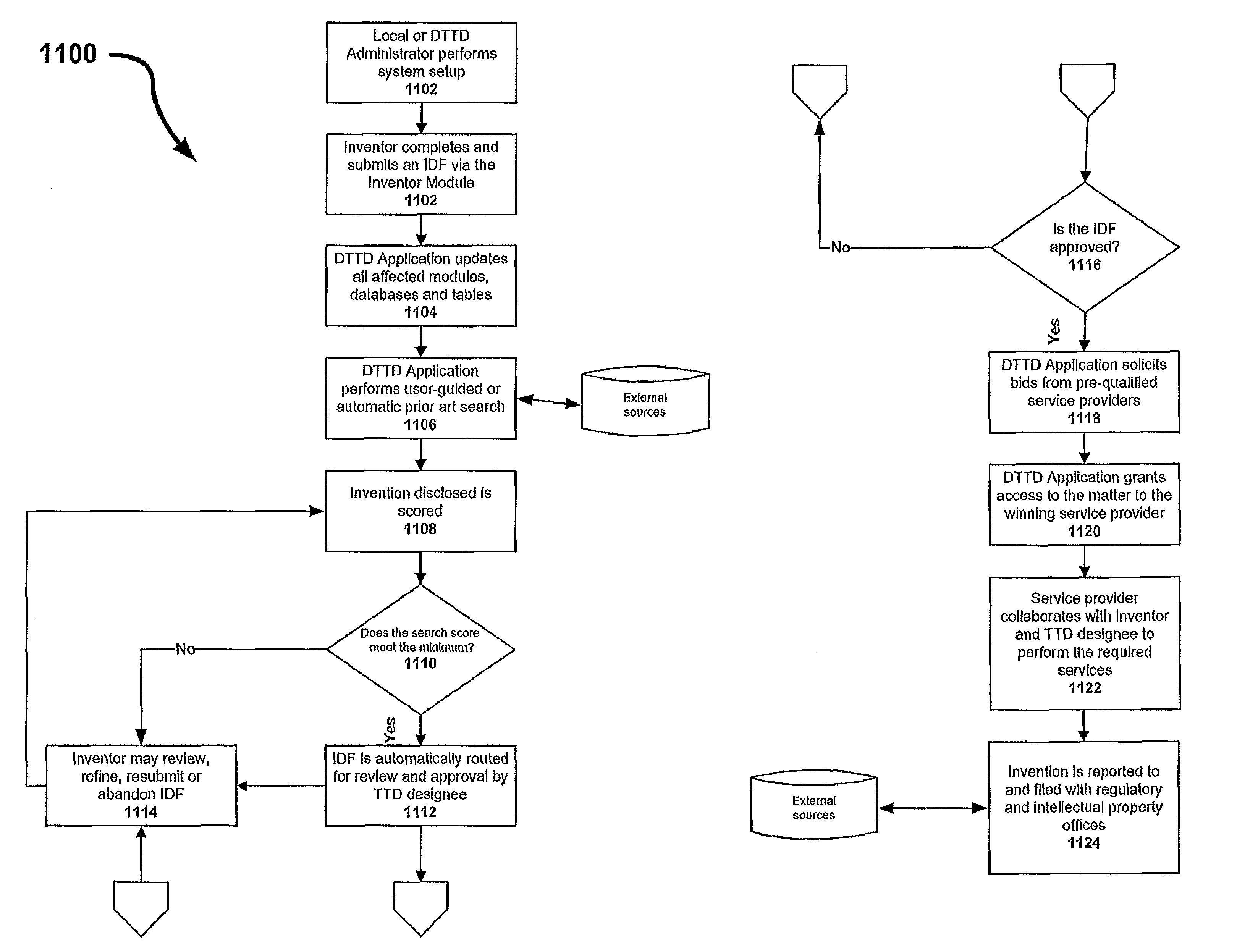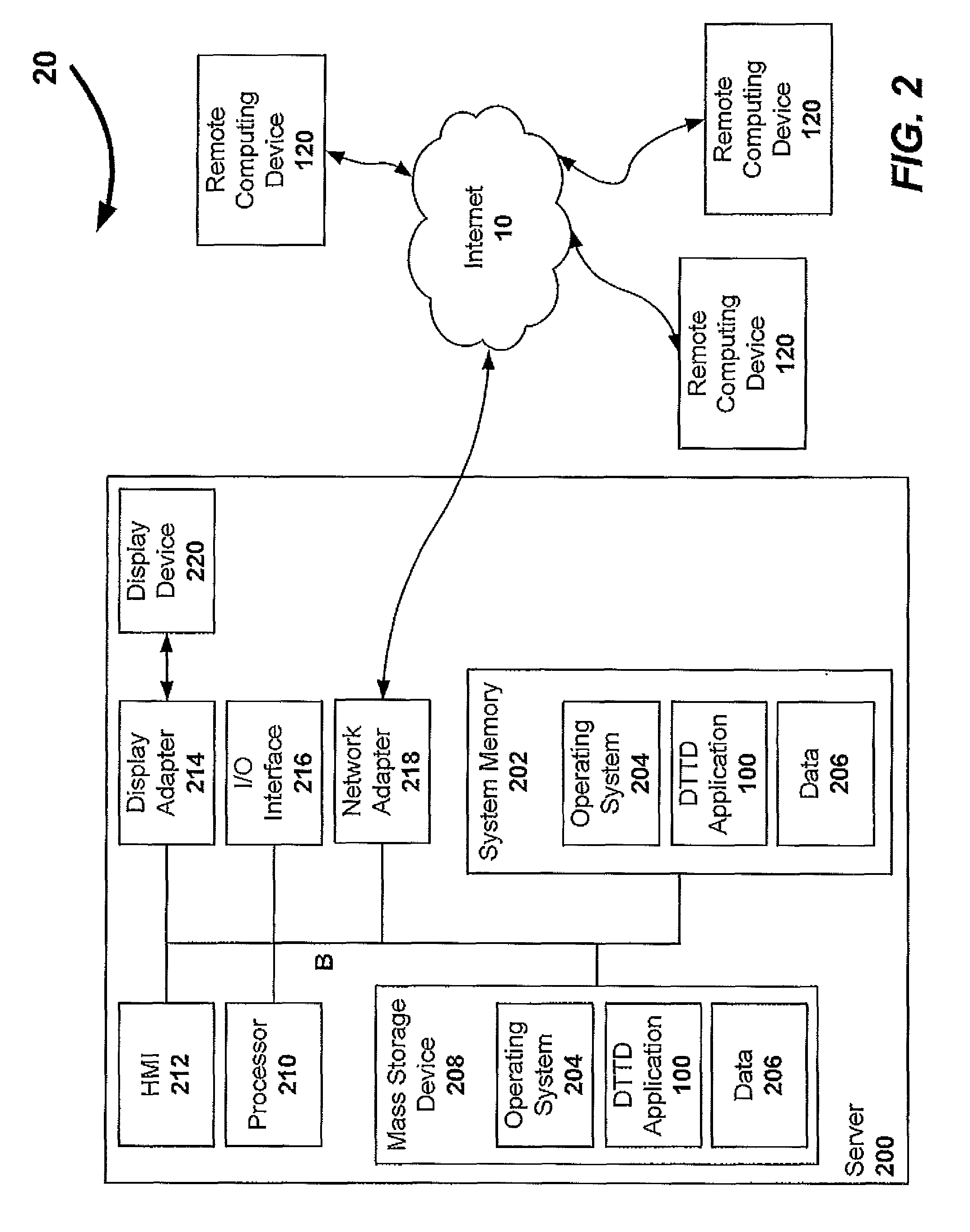Distributed technology transfer department
a technology transfer and department technology, applied in the field of distributed technology transfer department, can solve the problems of insufficient funding to staff and equip a technology transfer department with the professionals and tools, and inventive entities are often unable to create an infrastructure, so as to facilitate joint research and joint ventures, and ease the load of an existing ttd
- Summary
- Abstract
- Description
- Claims
- Application Information
AI Technical Summary
Benefits of technology
Problems solved by technology
Method used
Image
Examples
Embodiment Construction
[0036]As required, detailed embodiments of the present invention are disclosed herein. It will be understood that the disclosed embodiments are merely exemplary of the invention that may be embodied in various and alternative forms. The figures are not necessarily to scale, and some features may be exaggerated or minimized to show details of particular components. In other instances, well-known materials or methods have not been described in detail in order to avoid obscuring the present invention. Therefore, specific structural and functional details disclosed herein are not limiting but serve as a basis for the claims and for teaching one skilled in the art to variously employ the present invention.
[0037]Referring now to FIG. 1, the various embodiments of the present invention will be described in a context in which the DTTD application 100 resides on a node on the Internet 10. Those skilled in the art will readily appreciate that elements or modules of the DTTD application 100 co...
PUM
 Login to View More
Login to View More Abstract
Description
Claims
Application Information
 Login to View More
Login to View More - R&D
- Intellectual Property
- Life Sciences
- Materials
- Tech Scout
- Unparalleled Data Quality
- Higher Quality Content
- 60% Fewer Hallucinations
Browse by: Latest US Patents, China's latest patents, Technical Efficacy Thesaurus, Application Domain, Technology Topic, Popular Technical Reports.
© 2025 PatSnap. All rights reserved.Legal|Privacy policy|Modern Slavery Act Transparency Statement|Sitemap|About US| Contact US: help@patsnap.com



